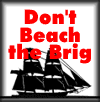|
||||||||||
|
CMHS Home
PPCLI in WW2
Activities 
|
The Uniform of the Princess Pat'sBattle DressA khaki wool tunic with a five button fly front closure, and a lay-down collar with a button under one side, and a button and a button-holed tab under its other side. There are two pleated patch breast pockets, whose scalloped flaps have hidden button closures. The integral shoulder straps are buttoned near the neck. The outside seam slashes at the pleated cuffs also have hidden button closures. 1st Canadian Division PatchThe PPCLI famous scarlet flash dates back to 1914 when the regiment's founder , Hamilton Gault, had the first flashes made in Quebec by the same order of nuns that knitted for Wolfe's Army . Canadian Battle Dress TrousersThe main features of the trousers were a large map pocket on the left leg and a small pleated pocket for the field dressing on the front right hip. Three buttons on the outside of the waist were used to fasten the trousers to the blouse in order to prevent the blouse riding up in the back. Six buttons for the attachment of braces were sewn on the inside of the waist. As can be seen on the label, the Canadian Broad Arrow is visible along with sizing and manufacturer details. Canadian Wool or Flannel ShirtThe primary shirt worn by Canadian other ranks was collarless and made of either flannel or cotton. Light cotton shirts with collars were also on issue, for summer wear with Canadian Pattern Khaki Drill uniforms. Until 1944, Canadian other ranks were not permitted to wear a collared shirt with a tie with battledress, although black neckties had been worn with service dress since 1942. In late 1944 other ranks were issued black cotton neckties for wear off duty with battledress. Unlike the British pattern shirt, the Canadian shirt has buttons down the entire front. The Mk II HelmetA standard Canadian Infantry helmet, as used throughout World War II, being a modification of the Mk. I helmet introduced in April of 1916 and used during the First World War. The helmet retained the Mk I shape but improvement was made to the steel, liner and chin strap. Constructed entirely of non-magnetic steel. The MkIII HelmetA Mk.III helmet, manufactured of a better grade of non-magnetic steel, better balanced, and with better ballistic properties than its Mk. II predecessor. The helmet has an all-around, shallow visor which is higher in the front and longer in the back than the Mk. II. This helmet is sometimes referred to as the "Invasion Helmet" as it was issued to the Canadian 3rd Division prior to the D-Day Invasion. Head-dressThe beret (on the left) was preferred by most soldiers replacing the field service (wedge) cap (on the right) during the later part of the war. Web AnkletsLeather JerkinCanadian Ammunition BootsThe black ankle boot or "ammunition boot" was the standard footwear worn by Other Ranks. These boots were made of leather with leather soles. Boots were normally worn with heel and toe irons or cleats to reduce wear on the soles. A variety of studs were worn as well, to increase traction on uneven ground. Boots and shoes were normally ladder laced, this was both for a smart appearance, and to facilitate removal in case of injury. Boots of British manufacture were also worn by Canadians, these were made with toe caps, a feature not found on Canadian boots. Personal Equipment and Weapons |
|||||||||


